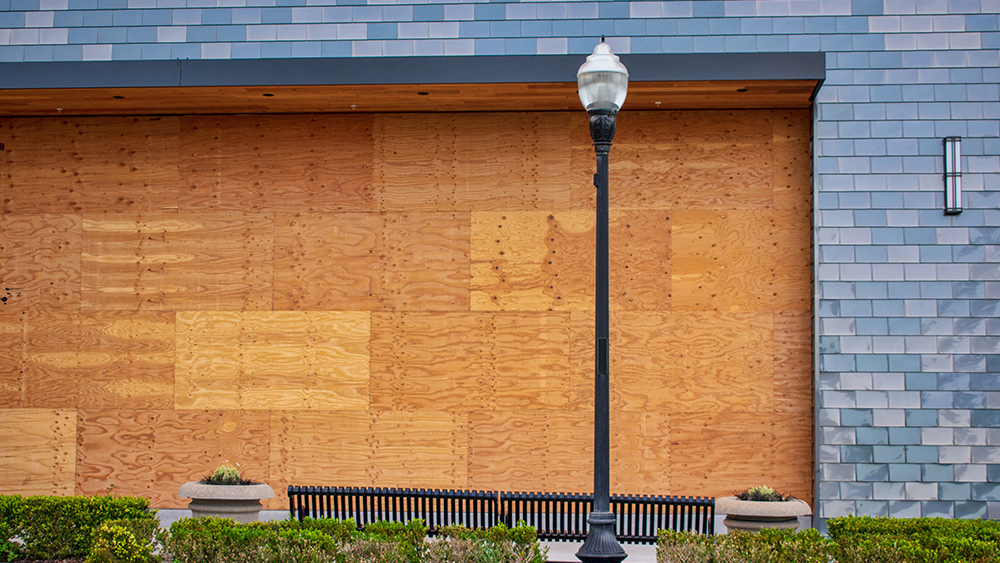State Farm announces it won’t renew 72,000 property insurance policies in California to avoid financial collapse due to a wave of claims
04/08/2024 / By Cassie B.

California’s biggest home insurance provider, State Farm, has announced that it will be discontinuing coverage for tens of thousands of policies in the state this summer in a move that many are interpreting as a strong sign that the insurance industry suspects something big is about to go down there.
On March 20, State Farm announced that 72,000 home and apartment policies in California will be cut, citing issues such as the increasing risk of catastrophes, regulatory costs and ongoing inflation. The move is a major blow to California homeowners, who are already grappling with insufficient policy coverage and high insurance rates.
In their announcement, the company said that the homeowners insurance policies for 30,000 customers, including condominium owners, will not be renewed. They also will be putting an end to offering commercial apartment policies and will not renew the 42,000 that they currently have in place. The cancellations will begin this summer, with homeowners insurance cancellations starting on July 3, followed by commercial property policy cancellations on August 20.
In a statement, State Farm said that they did not make the decision lightly. They added that they take “seriously our responsibility to maintain adequate claims-paying capacity for our customers and to comply with applicable financial solvency laws. It is necessary to take these actions now.”
Last year, State Farm announced that it would not be accepting any new home insurance applications in the state because of “historic” rises in inflation and construction costs. This was followed by a rate hike for 20 percent of its existing customers. Seven of California’s 12 biggest insurance groups have been either restricting or pausing new homeowners insurance policies during the last year.
Many Californians have already been struggling to insure their homes and commercial properties in the face of rising rates, strict coverage limitations and discontinued policies in areas that are susceptible to natural disasters. State Farm reported a net loss of $6.3 billion last year.
California insurance commissioner Ricardo Lara said that he would like to investigate the insurance company but wants to proceed carefully to avoid pushing other insurance companies out of California.
“Insurance companies are not like utility companies,” Lara told KABC News. “By law, they don’t have to be here, and when we try to overregulate, we’ll see what happened after the Northridge earthquake, when the legislature came in and tried to overregulate, and they no longer write earthquake insurance in California.”
What risks is the insurance industry anticipating in California?
Although the increasing prevalence of wildfires is undoubtedly a factor in California’s insurance problem, crime is also a growing issue, especially in liberal-run cities like San Francisco and Los Angeles. Many analysts believe that home break-ins are also playing a role in State Farm’s decision.
Although the company has yet to indicate exactly who will be subjected to the cuts, it will be interesting to see where they ultimately land. This will give a much clearer indication of what they are expecting to happen and what risks they are most concerned about at the moment.
United Policyholders’ John Lautcher said that the move will “put a lot of people in a difficult bind,” adding that he believes the company may be asked to explain how they choose whose policies are cut.
“I would think they would have to share with the department some logical selection process,” he added.
Consumer Watchdog Executive Director Carmen Balber said: “It’s an outrage that State Farm is dumping so many customers that have paid their premiums diligently for decades with the expectation that their home insurance will be there when they need it.”
Sources for this article include:
Submit a correction >>
Tagged Under:
Bubble, California, Collapsifornia, conspiracy, debt bomb, debt collapse, disaster, economic riot, finance riot, housing bomb, Inflation, insurance, market crash, money supply, natural disasters, pensions, risk, State Farm, theft, Twisted, wildfire
This article may contain statements that reflect the opinion of the author
RECENT NEWS & ARTICLES
COPYRIGHT © 2017 RISK NEWS



















